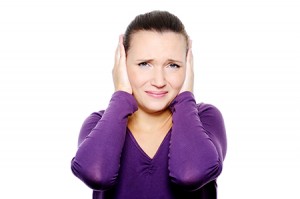Meet the “family” of Sound Intolerance or Hypersensitivity to sounds: Misophonia, Hyperacusis and Phonophobia.

Do you bother with sounds that other people hardly notice? This is more common than you might think!
Some people bother with the PRESENCE of repeated sounds, even if they are low level, such as chewing gum, crunching food, breathing, swallowing, coughing, throat clearing, blowing nose, etc. They can not cope with the annoying sounds while they are present and this is unrelated to the volume. In addition, these sounds provoke an UNCONTROLLABLE reaction of anger, hate and irritability. These cases are diagnosed as Misophonia or Selective Sensitivity to Sounds Syndrome (4S).
Other people bother with the VOLUME of the sounds, like the TV, loud music, voices, home appliances (blender, vacuum cleaner, hair dryer, microwave, washing machine etc). These people can cope with the sounds that bother them as long as the volume is low. These are the cases of HYPERACUSIS.
OuOther people avoid leaving home, because the FEAR to expose themselves to sounds and harm the ear appears before the nuisance itself. This is PHONOPHOBIA, which usually occurs along with one of the other types of intolerance to sounds.
Our medical evaluation of hypersensitivity to sounds includes a detailed interview and the measurement of hearing levels with Loudness Discomfort Levels (LDL). This is the complement of the conventional audiometry (hearing measurement) that identifies the volume of low, mid and high frequency sounds that begin to annoy each person. In hyperacusis and phonophobia, the results are usually altered; in Misophonia, they can be normal.
The TV program “Fantástico” showed our participation in an interview to demystify misophonia and clarify the population. Watch it here. Attention: In order to be didactic, the interview included the demonstration of sounds that may bother people with misophonia.
